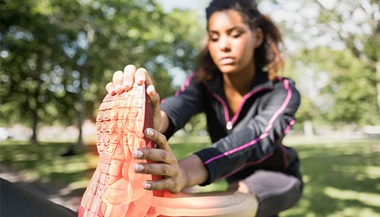Kyphoplasty
Like vertebroplasty, kyphoplasty injects special cement into your vertebrae — with the additional step of creating space for the treatment with a balloon-like device (balloon vertebroplasty). Kyphoplasty can restore a damaged vertebra’s height and may also relieve pain.
As with vertebroplasty, the effectiveness of kyphoplasty is under debate in the medical community — you should discuss the risks and benefits with your doctor.
Doctors might recommend kyphoplasty for cancer-damaged vertebrae or certain spinal fractures. In most cases, a weakening of the bones (osteoporosis) has caused the vertebrae to compress or collapse, causing pain or a hunched posture.
Kyphoplasty Risks
The risks of kyphoplasty include:
-
Infection
-
Bleeding
-
Increased back pain
-
Tingling, numbness or weakness because of nerve damage
-
Allergic reactions to chemicals used with X-rays to help guide the doctor
-
Cement leaking out of position
You may face other risks, depending on your specific medical condition. Make sure to discuss any concerns with your doctor before the procedure.
How Kyphoplasty Works
Before the procedure:
-
Your doctor will examine you, possibly drawing blood for testing and using X-ray or magnetic resonance imaging (MRI) to locate the fractures.
During the procedure:
-
An anesthesiologist will deliver medicine through an IV to either relax you and relieve your pain or put you to sleep.
-
With X-ray guidance, your doctor will insert a needle through your skin and back muscles into the bone, then inflate a balloon to help the vertebra regain its normal shape.
-
Your doctor will inject the cement while checking X-rays to ensure it’s going into the right place.
-
Your doctor will remove the needle, with no stitches needed.
-
The entire procedure will probably take less than an hour, though it may last longer if more vertebrae are treated.
After the procedure:
-
You will spend time in a recovery room. You could go home the same day, but your doctor may want you to stay overnight.
-
It’s possible that you can start walking an hour after the procedure. You may feel some soreness where the needle entered your back, but this lasts no more than a few days. You may quickly notice that you have less pain than you did before the surgery.
-
Talk with your doctor about whether you should avoid any activities after the procedure.
-
Your doctor may suggest taking certain vitamins, minerals and medications to help strengthen your bones and prevent additional spinal fractures.


.png?h=170&iar=0&w=200&hash=59CEE2D9B28155C77CEEC18D1582DAE4)

.png?h=170&iar=0&mh=260&mw=380&w=200&hash=A5411087D582A22AA77E2C122660E28D)

